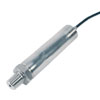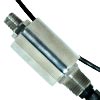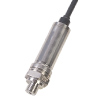Electric motors are powering a new generation of low-carbon cars and machinery, which promise lower emissions, less traffic pollution, and can help solve the problem of depleting oil supplies.
It is therefore no wonder that governments, academic institutions and commercial businesses are investing in research to increase performance and reduce the manufacturing costs of electric motors.
However, electric motor research is not limited to performance and cost reduction. Because they heat up during operation, electric motors also need excellent cooling systems.
This article looks at the challenges of electric motor cooling system research and testing, as well as the equipment needed to overcome these challenges.

Measuring flow
The cooling medium used in electric motors is usually a mix of water and glycol. This must flow continuously through the system.
To measure flow and check there are no problems, a differential pressure transducer is typically used.
The OMEGA Engineering PXM409-WWDIFF Wet/Wet Differential Pressure series features micro-machined silicon transducers, and is made from rugged stainless steel ideal for tough industrial automotive, or aerospace applications.
Read more about PXM409-WWDIFF pressure transducers
Preventing damage by pressure peaks
The flow of cooling medium is usually controller by a pump that is part of the motor’s control system. During development and testing, this pump can create critical pressure peaks that could damage some components of the system.
The following picture shows a water/glycol pressure measurement with no pressure snubber. A pressure peak is visible.

At particular risk is the diaphragm of the pressure transducer, which can be sensitive to pressure peaks or particles.
‘Pressure snubbers’ can prevent damage to the pressure transducers and other components.
OMEGA Engineering Pressure Pulse Snubbers protect transducers, gauges and switches from pressure spikes, surges and water hammer. They offer three different porosity ratings suitable for most media.
In the following graph, the same system with a pressure snubber. Pressure is steady and the transducer is protected.
 Read more about Pressure Pulse Snubbers
Read more about Pressure Pulse Snubbers
Data acquisition
Engineers also need to measure and monitor pressure peaks, using a data acquisition system.
The OMEGA Engineering iNET-400 multichannel data acquisition system directly connects to many data sources including pressure transducers. Expandable up to 1,000 channels, it provides a sample rate of 1 kHz, or 1,000 samples per second.
Read more about iNET-400
Recording and analysing data
Finally, data acquired during testing and monitoring must be usefully recorded, presented and analysed.
DASYLab software can be paired with the iNET-400 system described above, to highlight issues in the cooling system.
DASYLab is a complete data acquisition software application that offers:
- complex real-time data analysis
- a range of display formats including strip chart, scope, digital and analogue meters
- interoperability with other systems
Read more about DASYLab
If you would like to know more, or want to discuss your specific pressure testing requirements, the OMEGA Engineering team is here to help.
Contact us today.
 CLOSE
CLOSE







